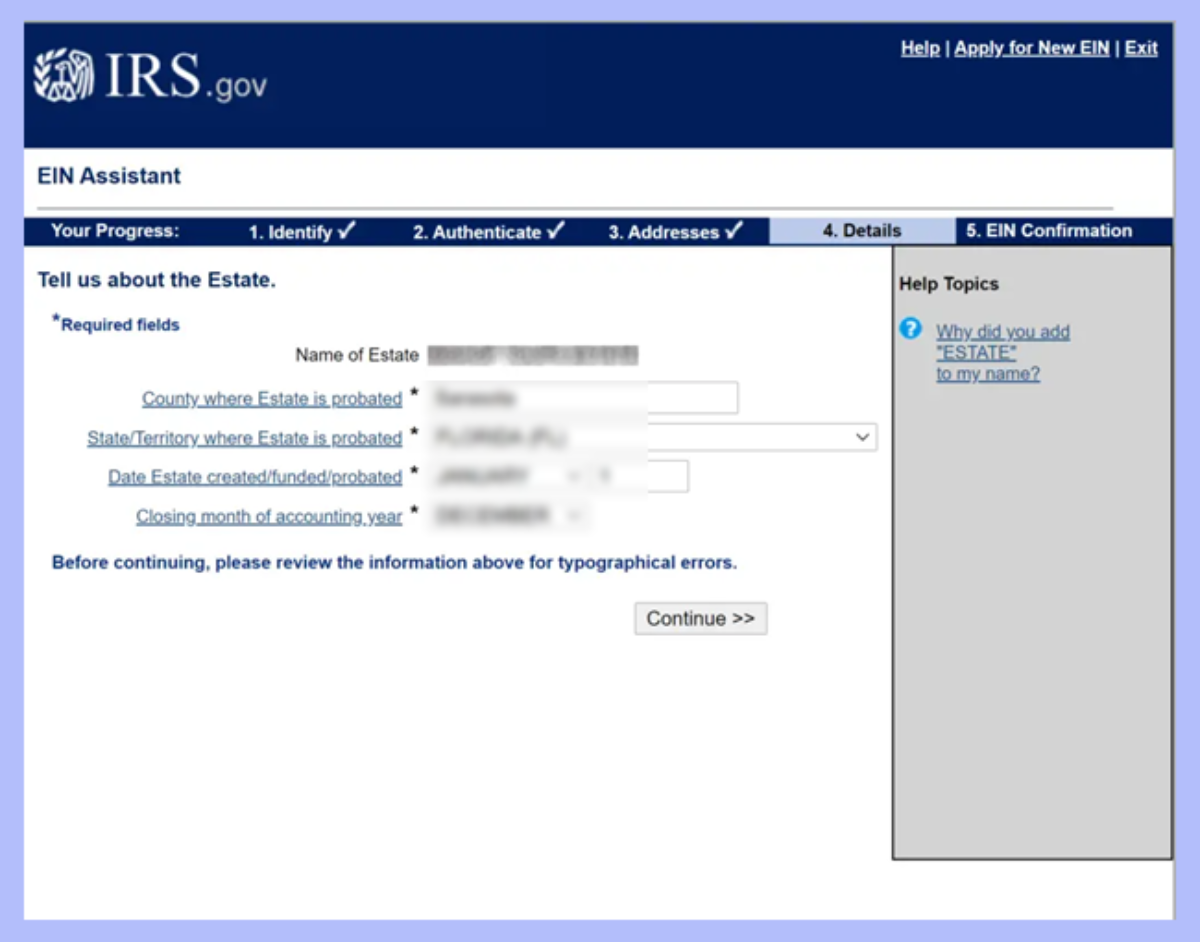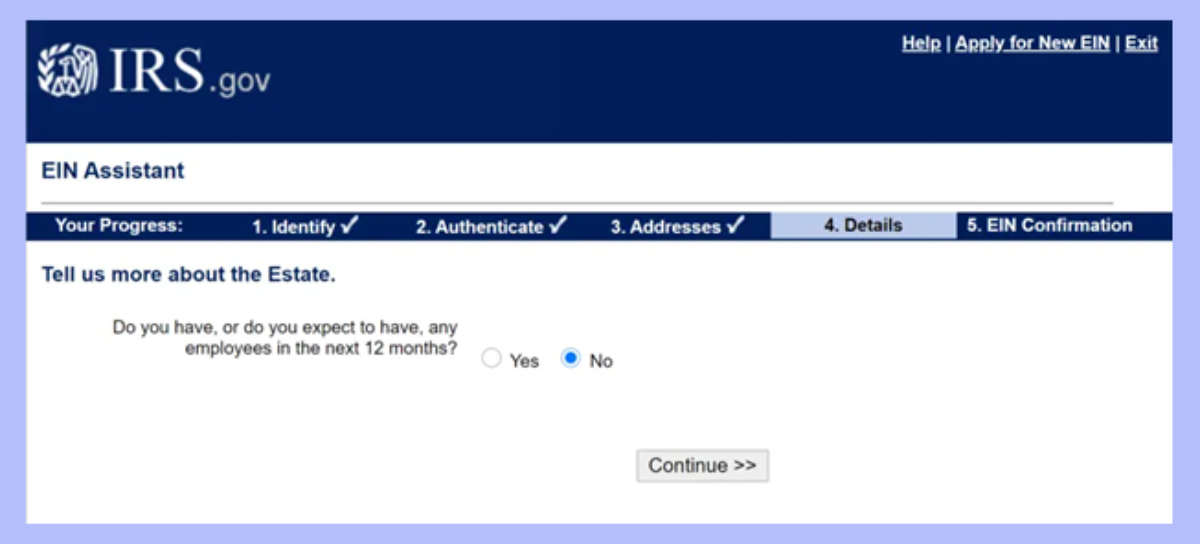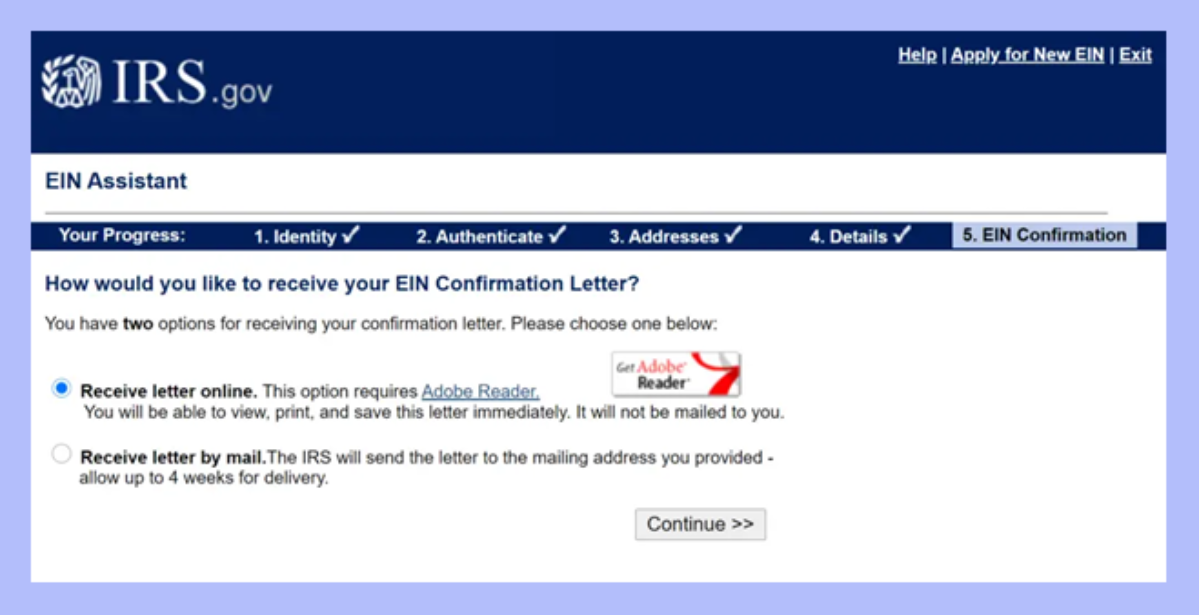Estate Settlement
May 01, 2025
What to Do When Someone Dies in California
Follow this step-by-step guide to navigate legal duties, probate, and estate tasks with clarity and confidence.
Filing estate taxes online can be challenging. Here’s a guide on obtaining an EIN to get you started.


Article Contents
After losing a loved one, the last thing on your mind is filing the estate’s income tax return. It’s difficult when life continues–even after a life-altering event. But, in the spirit of helping you and your family be prepared for anything in the new year, we’ve put together a quick guide on the first step: getting an Employee Identification Number (EIN).
First, a bit of context.
According to the IRS, an EIN is an identification number that identifies the tax accounts of employers and other entities, including estates and trusts. Don’t be thrown off by the term “employee”, as an EIN applies to many different businesses or persons.
When it comes time to file the estate’s tax income return, you will need an EIN to identify it to the IRS. Note that you as the executor or administrator of the estate will also need a valid form of identification (such as a Social Security Number).
Though you can apply for an EIN by submitting Form SS-4 by mail or fax, the most common (and expedited) method is filing online. If you prefer to file using paper, you can find the instructions for that here. For the purposes of this guide, we will only be showing how to obtain an EIN via the IRS website.
Before applying for an EIN, you will need the following pieces of information:
Legal name and Social Security Number of the decedent
Your SSN and mailing address for correspondence with the IRS
Records or information as to where the estate was probated
The date of death of the decedent
Head to the following link and select the “Apply Online Now” button. Note that you may only file during Monday-Friday 8 AM to 10 PM EST.

The IRS website is intuitive and allows for easy access. Before proceeding by pressing the “Begin Application” button, make sure to quickly read through the “About the EIN Assistant” and “Restrictions” sections. Because the application can only be completed in one session, ensure you have a reliable internet connection.

From the options presented, select “Estate” as your legal structure, then click “Continue”.

The EIN Assistant will present you with a brief breakdown of what an estate is, to make sure you are selecting the proper option. Select “Continue” to proceed.

Next, input the first, middle, and last names of the decedent, along with their SSN. Once entered, click “Continue”. Note that any information entered must correspond to IRS records. It is good practice to cross reference this information with any IRS documentation that contained the decedent’s information.

On this page, enter the required details about the Executor/Administrator/Personal Representative of the estate. If you are unsure of which fiduciary relationship to select from the drop-down box, here’s a quick breakdown:
Executor/Personal Representative: the person named in the decedent’s will to administer their estate.
Administrator: the person appointed by the courts to administer the estate of the decent when no will is present.

Enter the mailing address for the Executor or Administrator. This mailing address will be used for correspondence between the IRS and the estate, so ensure that you will have easy access to it.

On this page, any information you entered previously will be used to auto-fill information about the estate. Take care to confirm that the estate was probated in the county and state given, as this may not always be the case. If it is incorrect, manually adjust it.
Secondly, confirm that the closing month is correct. If the accounting year of the estate follows a calendar year, it will be December. If not, your closing month will be the 12th month of your accounting year. For example, if your accounting year is from June to May, then your closing month would be May.

If you expect to have employees that work for the estate, select “Yes”. If not, select “No”.

Finally, you may choose how you will receive your confirmation letter. The fastest option is to receive it online, but you also have the option to receive it via mail.

If you’re feeling overwhelmed by trying to navigate the IRS website alone, or you’re ready to consult with one of our estate experts, we are happy to help. At ClearEstate we employ veteran estate accountants, staff, and other estate professionals to ensure you receive the care you deserve. We’re offering a free consultation to kick the new year off right. Hint: that’s about the same amount of time it would take to walk you through this application.
 Simplify Probate Today
Simplify Probate Today
Get expert guidance from our specialists who've helped 10,000+ families.
Book a free consultation